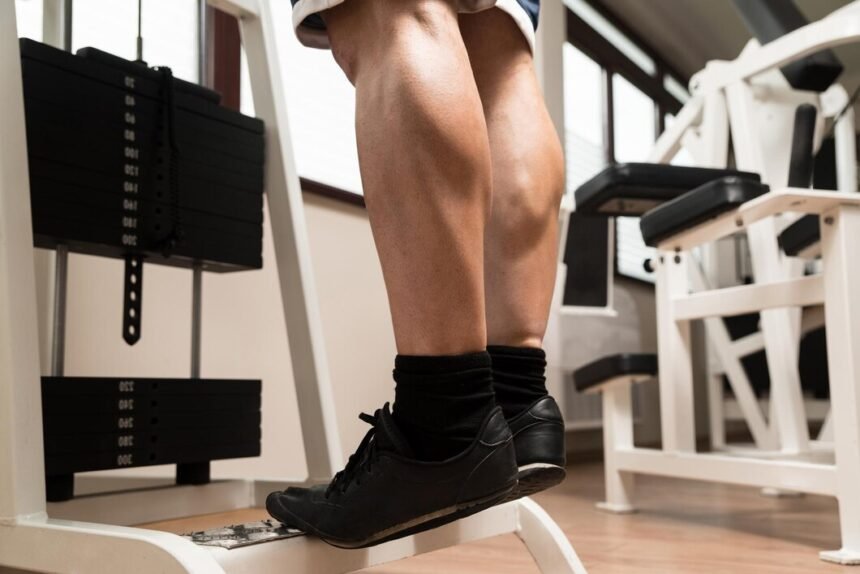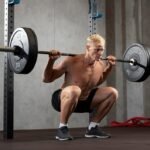Standing Machine Calf Raise: Exercise Overview
The standing machine calf raise is a targeted isolation exercise designed to strengthen and develop the gastrocnemius, the prominent “show” muscle of the calf, with secondary engagement of the soleus. Performed on a calf raise machine, this movement isolates the calves, making it ideal for building lower-leg size and definition.
This exercise is perfect for enhancing calf aesthetics and supporting functional movements like running or jumping. It’s a versatile addition to leg-focused workouts, lower-body sessions, or full-body routines, suitable for lifters of all levels aiming to sculpt defined calves (Schoenfeld, 2010).
How to Perform the Standing Machine Calf Raise
- Adjust the shoulder pads on the standing calf raise machine to align with your height, ensuring a comfortable fit.
- Step under the pads, placing the balls of your feet on the platform with toes pointing forward and heels naturally hanging off the edge—this is your starting position.
- Extend your hips and knees to lift the shoulder pads, standing tall with your core engaged.
- Lower your heels by dorsiflexing your ankles, stretching your calves fully until you feel a gentle pull.
- Flex your calves to extend your ankles, raising your heels as high as possible, and pause briefly at the top to maximize contraction.
- Repeat for the desired number of repetitions.
Tips for Optimal Performance
- Control the Movement: Perform the raise and descent slowly to maximize calf activation and minimize momentum, enhancing muscle engagement (Schoenfeld, 2016).
- Pause at the Top: Hold the top position for 1–2 seconds to intensify the contraction and strengthen the mind-muscle connection (McGill, 2010).
- Push Through the Ball of the Foot: Focus on moving through the ball of your foot rather than the toes to target the gastrocnemius effectively and reduce foot strain (Wirth et al., 2016).
- Avoid Excessive Knee Lockout: Keep a slight bend in your knees if locking out fully causes discomfort in the back of the knee, maintaining a consistent position throughout.
- Limit Heel Depth: Avoid lowering your heels too far if you feel discomfort in the bottom of your foot, as this may indicate overextension.
- Breathe Properly: Exhale as you raise your heels and inhale as you lower them to support core stability and muscle oxygenation.
Sculpting calves with standing raises? Explore how they fit into our Ultimate Guide to Muscle Groups for lower-leg power.








